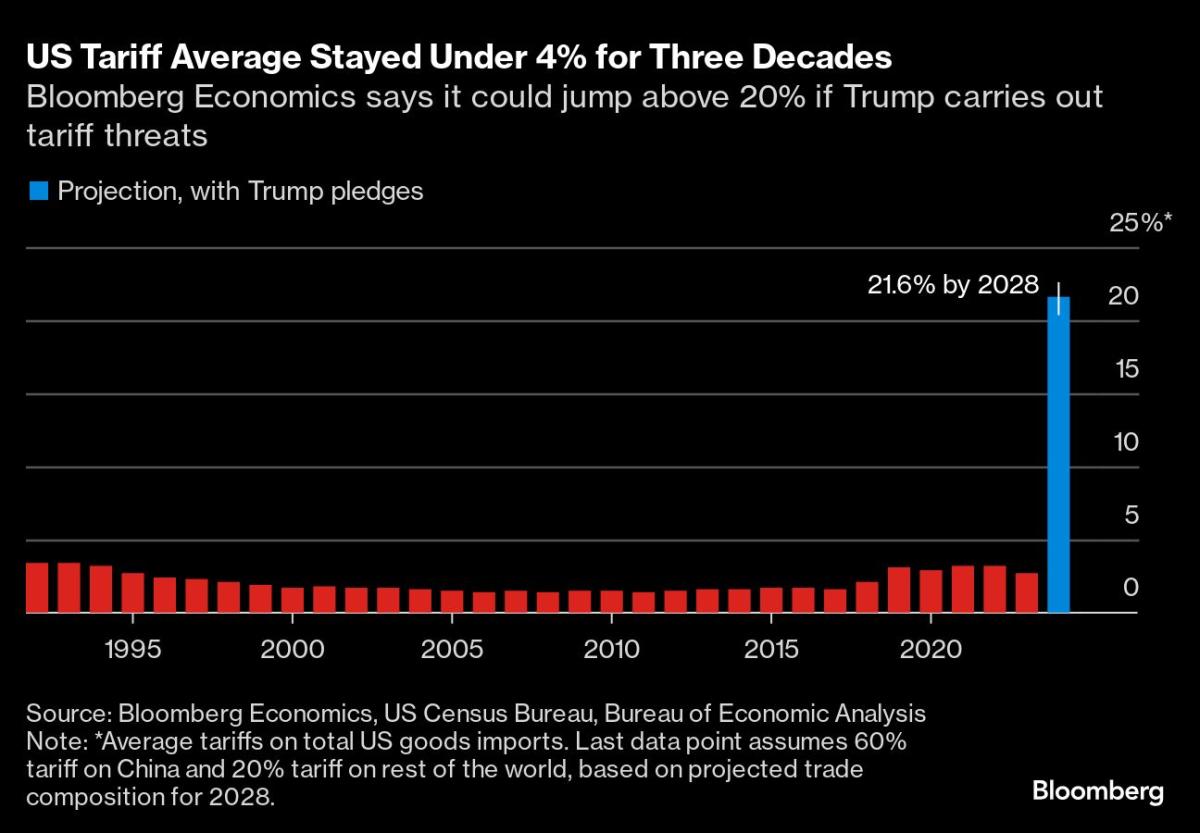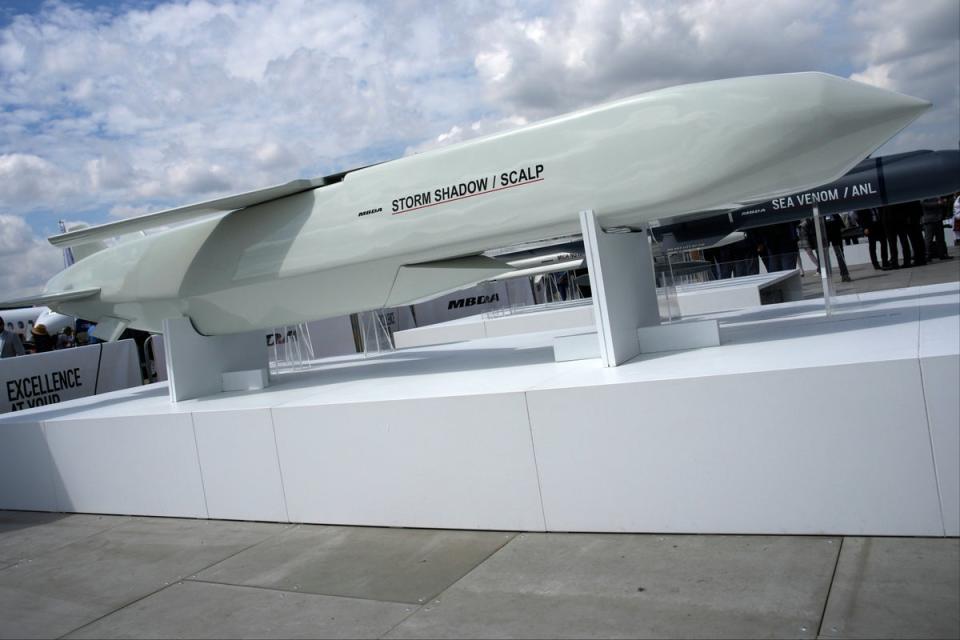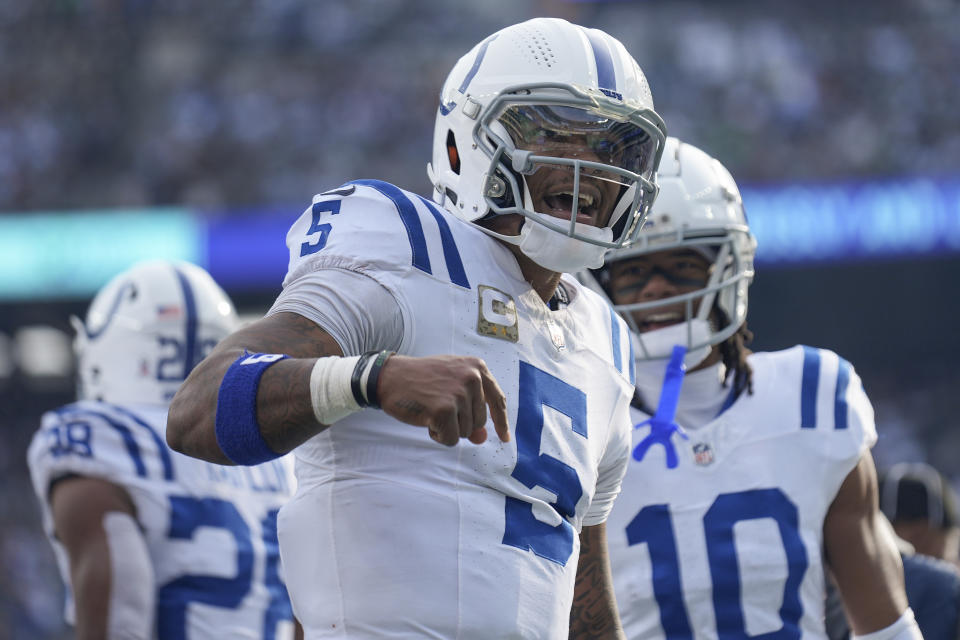
(Bloomberg) — Rob Subbaraman is preparing for his second Trump presidency with a new accessory in his economist toolkit: the head of global markets research at Nomura Holdings Inc. has downloaded Truth Social, the President-elect’s conservative social media platform.
Most Read from Bloomberg
“I’m going to get in trouble with my kids,” said Subbaraman, who’s been in his current role in Singapore for a decade. “I tell my kids in the evening to switch off all their devices but I’ve got to be on. I don’t know what Trump is going to do or when he’s going to do it.”
The job has just gotten a whole lot more unpredictable — again — for economists, a typically staid bunch who rely on precedents to build the formulas and spreadsheets that underpin their forecasts. Donald Trump’s first presidency complicated that approach and his campaign pitch and the appointments he’s made since sweeping the Nov. 5 election suggest yet more upheaval for trade, tax, immigration and just about every other policy area you can think of.
Analysts are scrambling to adapt, developing new models, hiring more wonks to crunch thousands of lines of trade code and putting in a lot more face time with nervous clients. The end goal: produce accurate forecasts to help traders, businesses and governments navigate the new, chaotic world.
“Economists use models, and models rely on stable relationships and assumptions, but right now we don’t really know what the assumptions are and the relationships might not be stable,” said Subbaraman, who hosted a call with 250 global clients until midnight US time on election night.
Analysts are particularly focused on tariffs and their impact on the world’s two largest economies — the US and China. Most agree that levies are coming — likely in the second half of 2025 and probably lower than the announced 60% on Chinese goods. There may be universal tariffs, too, but with plenty of exemptions and likely below the advertised 20%, the thinking goes.
If anything close to these levels is added, it could keep prices elevated and delay the Federal Reserve’s easing cycle, which markets have already rushed to price in.
Then there’s the issue of secondary effects, which can hit economies harder than the tariffs themselves. Uncertainty itself is a drag on activity, with Barclays Plc analysts estimating that growth could be cut by 0.3% in the US and 0.8% in China if trade policy uncertainty is heightened to 2018 levels.
During that time the slowdown in capital spending and trade from weaker corporate confidence “weighed more heavily on Asia’s growth outlook vs. the direct effect of tariffs on exports,” Chetan Ahya, chief Asia economist at Morgan Stanley Asia Ltd., wrote in a Nov. 6 note. Ahya was global head of economics for much of the 2018-2019 US-China trade war.
Market Ripples
Compounding the challenge, financial channels must also be assessed. The S&P 500 Index has rallied, the dollar strengthened and 10-year Treasury yields climbed since the election as investors piled into the so-called Trump Trade.
Those market moves eventually flow through to the real economy as lending rates shift, consumer and business confidence is swayed and importers and exporters the world over pay more or less in their transactions.
All of that means economists can’t just model the stone being thrown into the pond, they need to explain the ripples that are created too.
UBS Group AG analysts spent five months developing a global tariff model that includes variables like import substitution, exchange rates and how much companies are likely to absorb in their profit margins to try and capture the “joint equilibrium determination of the output, inflation, and exchange rates of trading partners.” In other words, how tariffs will affect economies.
In a 74-page October report, chief economist Arend Kapteyn and a team that includes former European Central Bank senior economist Pierre Lafourcade laid out more than a dozen potential scenarios, which included global growth easing to 2% in 2026 if Trump adds tariffs as promised instead of the baseline 2.9% estimate.
Tariffs on all imports “gets unbelievably complicated,” Kapteyn said by phone. “There’s not one right answer for what tariffs will do.”
Kapteyn’s colleague Alan Detmeister, who was previously in charge of the inflation-forecasting unit at the Fed’s Board of Governors, pores through thousands of HS-10 codes, or specific imports and exports. Those are then cross-referenced with things like the level of trade for that item and the value-add (how much of an item was actually made in that country) to determine how it might filter through into the economy.
In econo-speak, Trump injects a lot of “structural breaks” and “non-linearity” into forecasting. Many economists have turned to scenario analysis which provides a range of outcomes, often with rough probabilities attached.
Maeva Cousin, Bloomberg Economics’ chief trade and climate economist, and her colleagues use a “computable general equilibrium model,” essentially a kind of wonky program built by researchers at the World Trade Organization, to assess various tariffs scenarios. They also use data from the Asia Development Bank and OECD.
“These are all tools that may not have been useful in the era of globalization, but they’re certainly useful now,” said Cousin, whose model suggests 90% of US-China trade would disappear if Trump delivers on his 60% tariff threat.
Listen: China Could Call Donald Trump’s 60% Tariff Bluff
Forecasting is one thing; investing client cash based on those forecasts is another.
“This is the period of most uncertainty, but we need to take a stance in our book,” said Monica Hsiao, chief investment officer and founder of Hong Kong-based Triada Capital.
Hsiao, who’s trained in economics, international policy and law, takes long and short bets in credit markets — some as short as a week. Her base case: the terminal rate will be higher, but deficits and inflation will likely be more controlled than the market fears. Tariffs will be aimed at countries with the largest trade deficits with the US, though negotiated down over time.
In her current portfolio, that means shifting to higher yield because it tends to be less rate sensitive, and also getting cautious on taking outright duration risk, or anything above 10 years. At least for now.
“Trump is someone you can’t always analyze,” she added. “He’s mercurial.”
During Trump’s first presidency, there was often a gap between what he threatened and the final policies implemented as officials reined him in and executives such as Apple Inc.’s Tim Cook won tariff exemptions. History could repeat: Elon Musk’s Tesla Inc., for instance, relies on factories in China.
All those variables have many advising caution. “We can’t be jumping at sort of shadows,” Australia’s central bank chief and London School of Economics alumni Michele Bullock said during a panel discussion in Sydney last week.
Trump has yet to be sworn in — that’s not until Jan. 20 — let alone announce policies and steer them through Congress. That means some economists are asking a lot of “what-ifs” but aren’t jettisoning their current forecasts just yet.
“It is critical not to get caught up in the noise and drama,” said Mark Zandi, chief economist at Moody’s Analytics. “It is always important to focus on what policymakers do, and not necessarily on what they say. That was certainly the case in President Trump’s first term, and I suspect will be even more the case in his second.”
–With assistance from Enda Curran.
Most Read from Bloomberg Businessweek
©2024 Bloomberg L.P.
EMEA Tribune is not involved in this news article, it is taken from our partners and or from the News Agencies. Copyright and Credit go to the News Agencies, email news@emeatribune.com Follow our WhatsApp verified Channel





